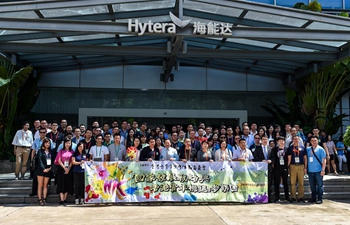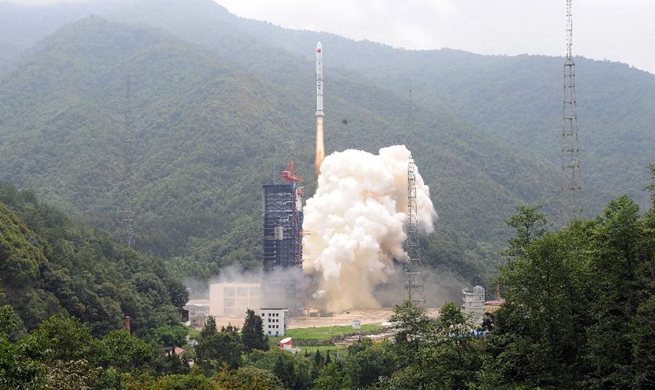WASHINGTON, June 27 (Xinhua) -- An international team of astronomers has found that "'Oumuamua," the first interstellar object discovered within our solar system, is moving faster than predicted, suggesting that it is most likely an interstellar comet instead of an asteroid.
The discovery, reported on Wednesday in the journal Nature, revealed that the measured gain in speed was tiny and 'Oumuamua, detected in October 2017, was still slowing down because of the pull of the Sun.
The most likely explanation is that 'Oumuamua is venting material from its surface due to solar heating, a behavior known as outgassing, according to the researchers.
The thrust from this ejected material was thought to provide the small but steady push that was sending 'Oumuamua hurtling out of the solar system faster than expected.
As of June 1, it has been traveling at roughly 114,000 kilometers per hour, according to the study.
The outgassing was a typical behavior for comets and contradicted the previous classification of 'Oumuamua as an interstellar asteroid.
"We think this is a tiny, weird comet," said Marco Micheli with European Space Agency. "We can see in the data that its boost is getting smaller the farther away it travels from the Sun, which is typical for comets."
Usually, when comets are warmed by the Sun they eject dust and gas, which form a cloud of material called a coma round them, as well as the characteristic tail. However, the research team could not detect any visual evidence of outgassing.
"We did not see any dust, coma, or tail, which is unusual," explains co-author Karen Meech with University of Hawaii, who led the discovery team's characterization of 'Oumuamua in 2017.
"We think that 'Oumuamua may vent unusually large, coarse dust grains," said Meech.
The team speculated that perhaps the small dust grains adorning the surface of most comets eroded during 'Oumuamua's journey through interstellar space, with only larger dust grains remaining, and the cloud of these larger particles would not be bright enough to be detected by the telescope.

















